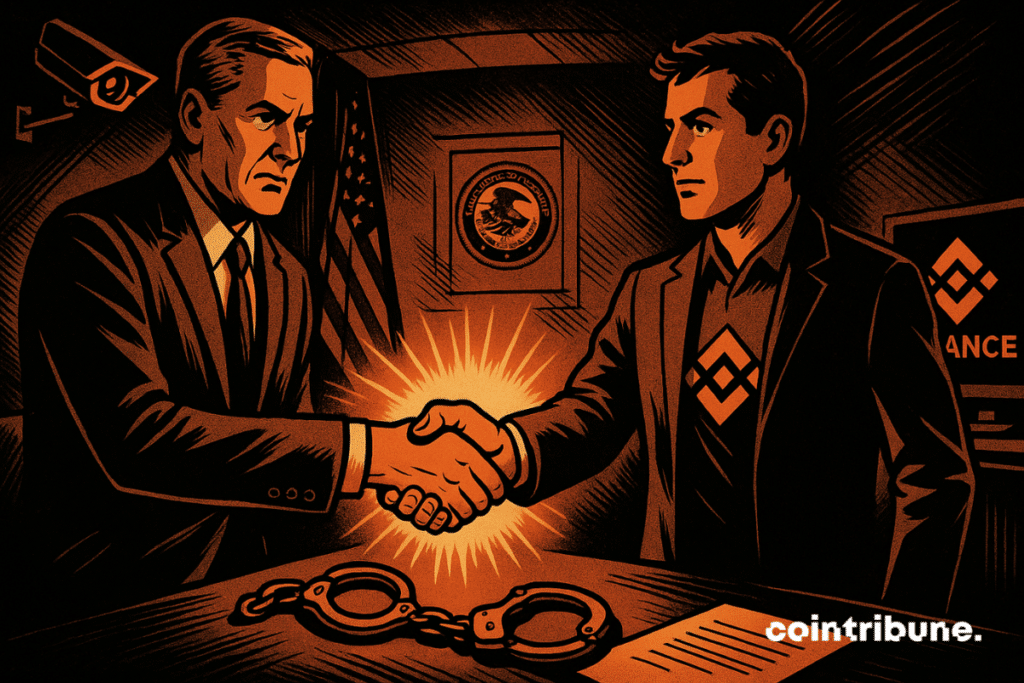Binance Accelerates Exit From Regulatory Oversight - Aims to Terminate Monitoring Ahead of Schedule
Binance just dropped the regulatory equivalent of a mic drop—pushing to exit oversight months before anyone expected.
The Early Exit Play
No waiting around for compliance timelines. The exchange is maneuvering to cut its monitoring period short, signaling a bold shift from its previous stance. Sources say the move demonstrates Binance's confidence in its revamped compliance framework—or maybe just its impatience with watchdogs breathing down its neck.
Market Impact
Traders barely blinked—BNB holdings stayed steady while the broader crypto market churned. Because nothing says 'trust us' like trying to ditch your babysitter early. The move could set precedent for other exchanges facing similar oversight arrangements.
Behind the Scenes
Insiders hint at streamlined internal processes and enhanced reporting systems making extended monitoring redundant. Regulatory experts remain divided—some call it a masterstroke in regulatory relations, others see it as testing how much leash the watchdogs will really give.
Because in crypto, nothing says 'compliance' like negotiating your way out of compliance checks—the financial sector's version of 'trust me bro' just got a corporate upgrade.

In brief
- Binance seeks to end earlier than expected the monitoring imposed by the US Department of Justice (DoJ) in 2023.
- This supervision was part of a $4.3 billion settlement reached after serious compliance failures.
- Discussions are ongoing with the DoJ, which is considering easing or lifting this external monitoring in certain cases.
- If successful, this early exit could strengthen Binance’s position but raises questions about future controls.
The weight of an extraordinary settlement
Less than a year after its $4.3 billion agreement, Binance wants to end DoJ’s judicial oversight, while BNB hits a new all-time high.
Indeed, in November 2023, Binance accepted a historic agreement with the US Department of Justice to end a series of prosecutions concerning serious violations of compliance obligations.
BNBUSDT chart by TradingViewThis $4.3 billion arrangement included a series of binding measures, among which the imposition of an “independent compliance monitor” tasked with thoroughly reviewing Binance’s internal practices over a three-year period.
The DoJ accused the crypto exchange of failing its anti-money laundering duties. More precisely, the authorities believed that Binance “did not implement an effective anti-money laundering program”, a criticism stated in the exact terms of the published agreement.
This monitoring device applied exclusively to Binance’s international operations and did not apply to its US subsidiary, Binance.US. It aimed to supervise the company’s compliance following past practices, often criticized by regulators. Here are the key elements of this settlement :
- Total amount of the agreement : $4.3 billion, part paid immediately, the rest staggered ;
- Duration of monitoring : 3 years of active supervision by an independent compliance expert, appointed in agreement with the authorities ;
- Scope of the measure : applies only to Binance Holdings (global entity), not to Binance.US ;
- Reasons for the settlement : breaches of anti-money laundering rules, absence of a system to detect suspicious transactions, and general weaknesses in compliance governance ;
- The DoJ’s objective : force Binance to undergo structural reform, under direct supervision, to prevent repetition of the same misconduct.
The imposition of such an expert aimed to restore confidence in Binance’s ability to operate according to international standards. In practice, this means that every internal process, financial flow, and regulatory update had to be subject to an external, independent audit, regularly reported to authorities.
Towards an early exit of the crypto exchange from external control ?
Today, Binance is reportedly in talks with the DoJ to try to lift the monitoring obligation before the end of the initially planned three-year period. No official decision has been announced so far, but the Department of Justice “is considering lifting the obligation”, as part of a reassessment of the usefulness and effectiveness of the arrangement.
This initiative is not isolated, as companies like Glencore Plc, NatWest Group Plc, and Austal Ltd. have obtained early termination of their external supervision obligations.
The DoJ’s current approach could therefore fit into a trend aiming to modulate the use of independent experts depending on the context and the demonstrated cooperation of the concerned companies. In this framework, the crypto exchange Binance WOULD seek to reposition itself as a reformed actor, able to operate without oversight.
If this Binance attempt succeeds, it could allow the exchange to reduce its compliance costs and restore its reputation more quickly. However, this operation is not without risk. Premature lifting of external control could reignite criticism of the US authorities’ leniency towards Web3 giants Web3.
Maximize your Cointribune experience with our "Read to Earn" program! For every article you read, earn points and access exclusive rewards. Sign up now and start earning benefits.

